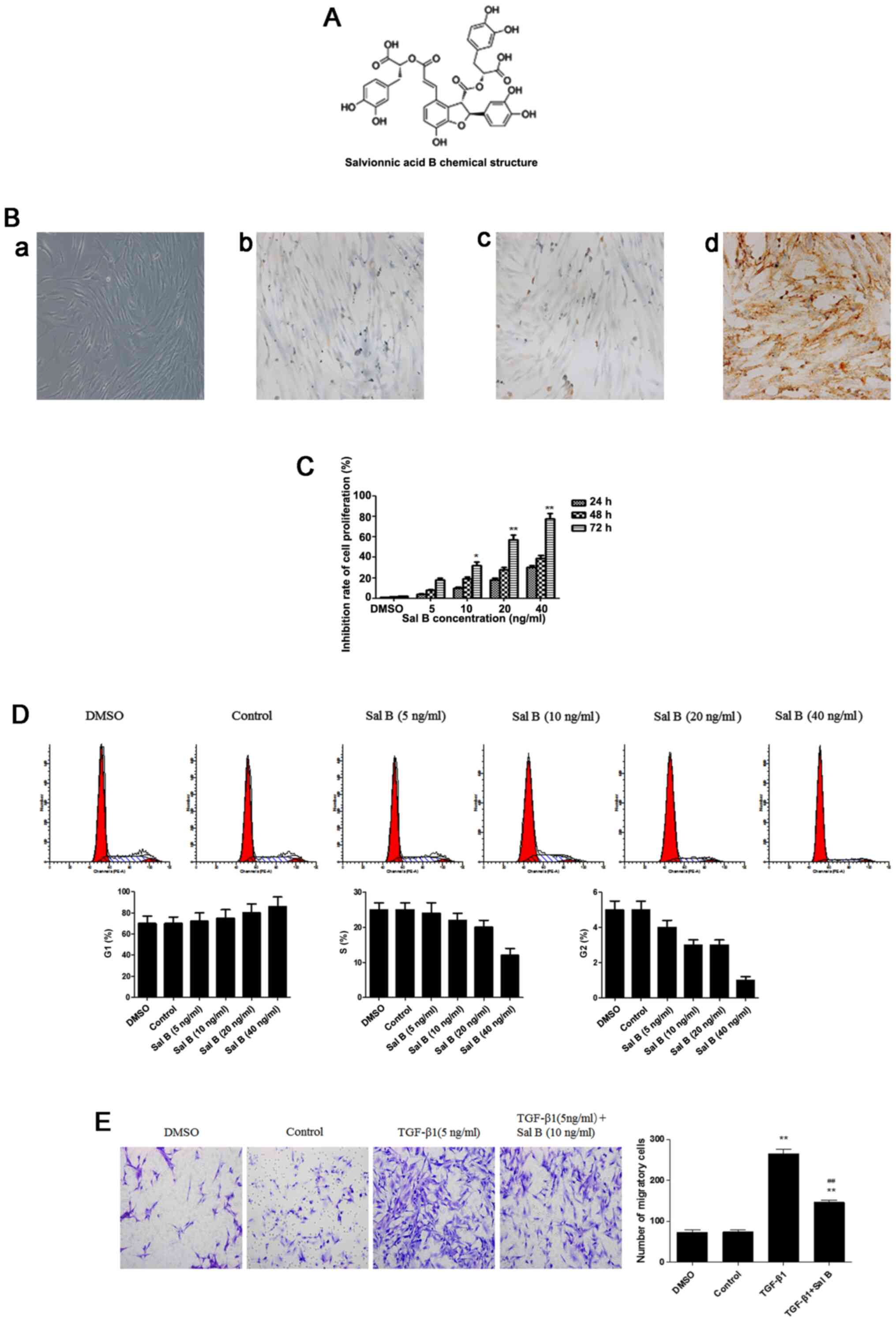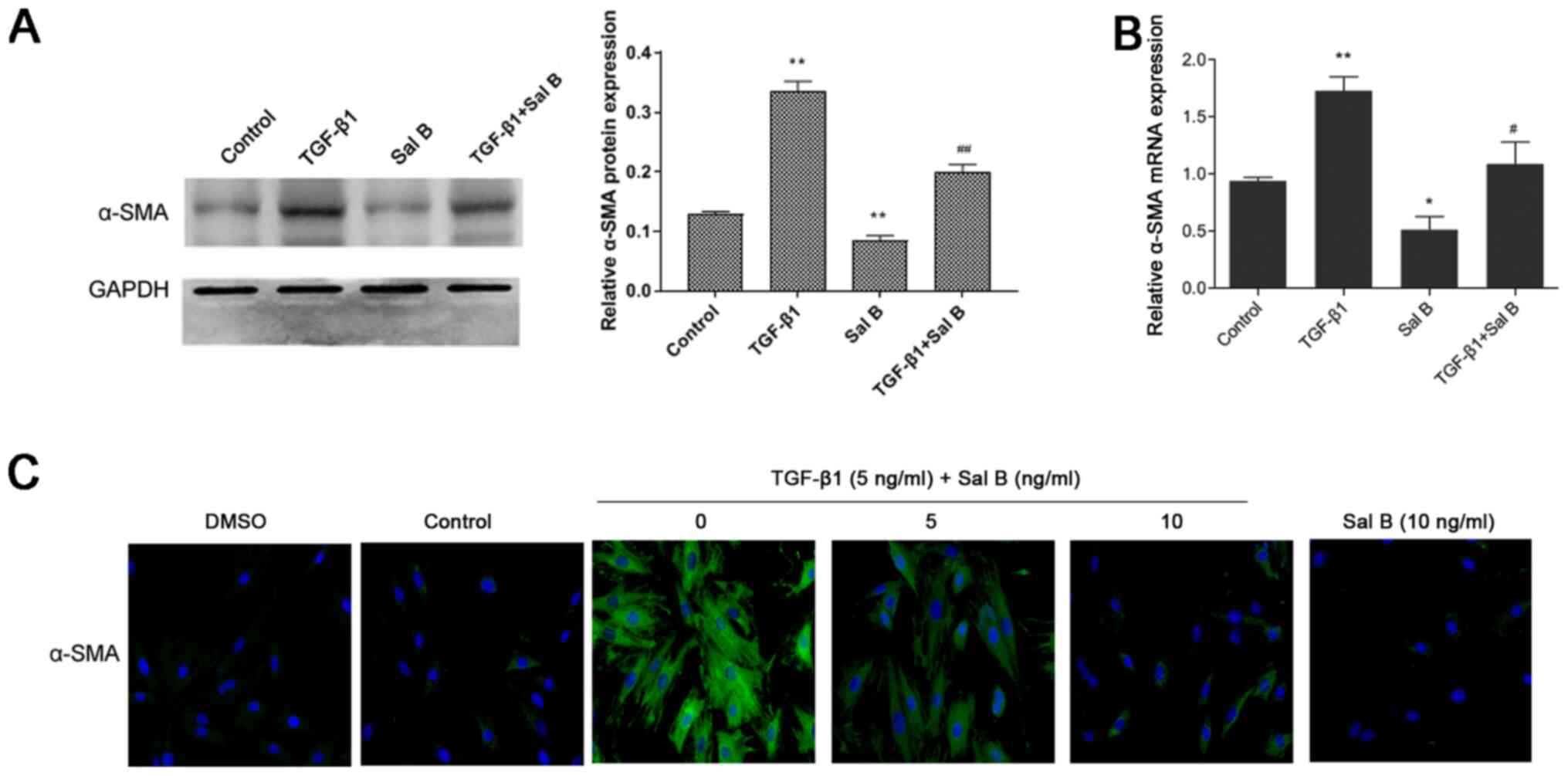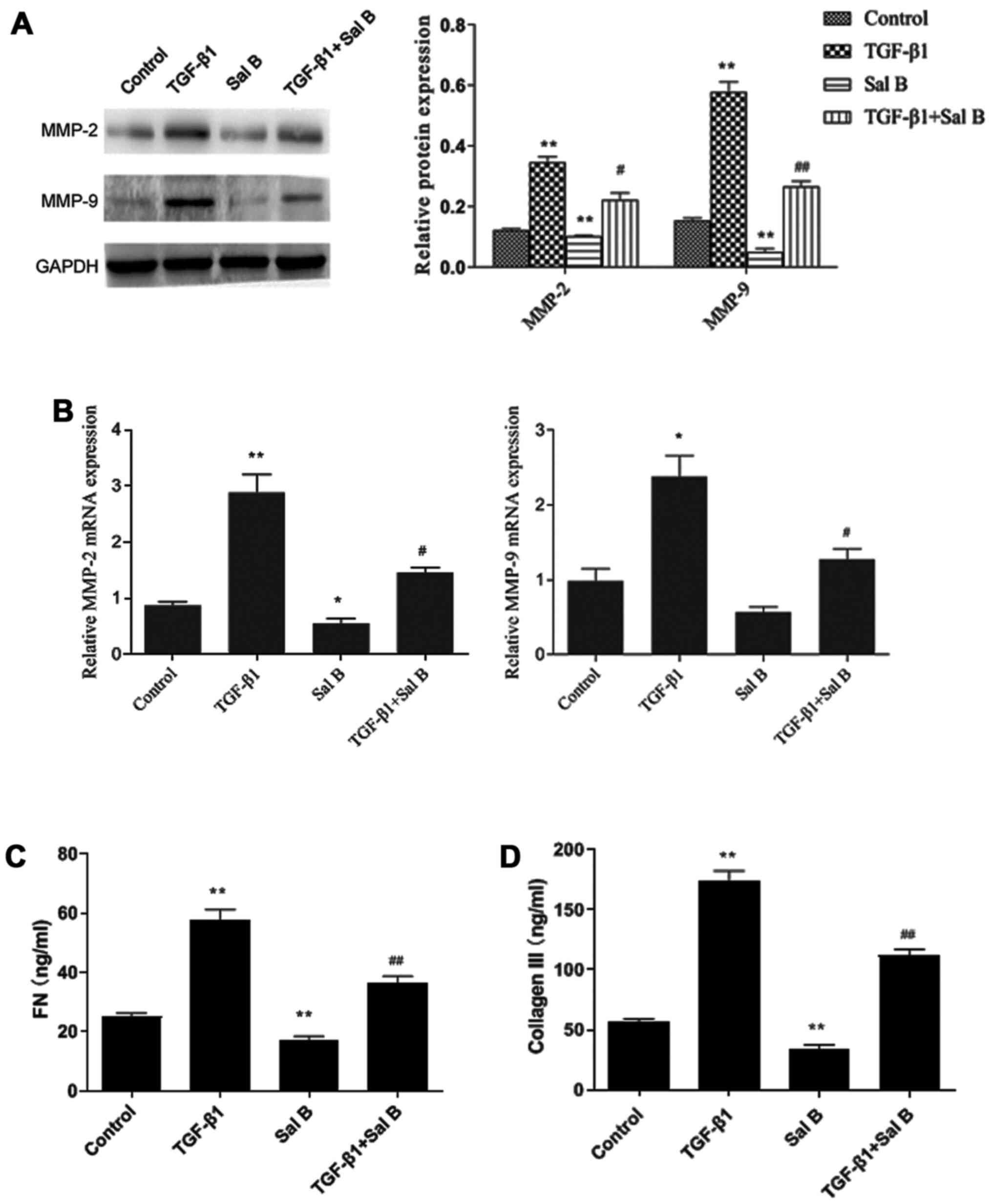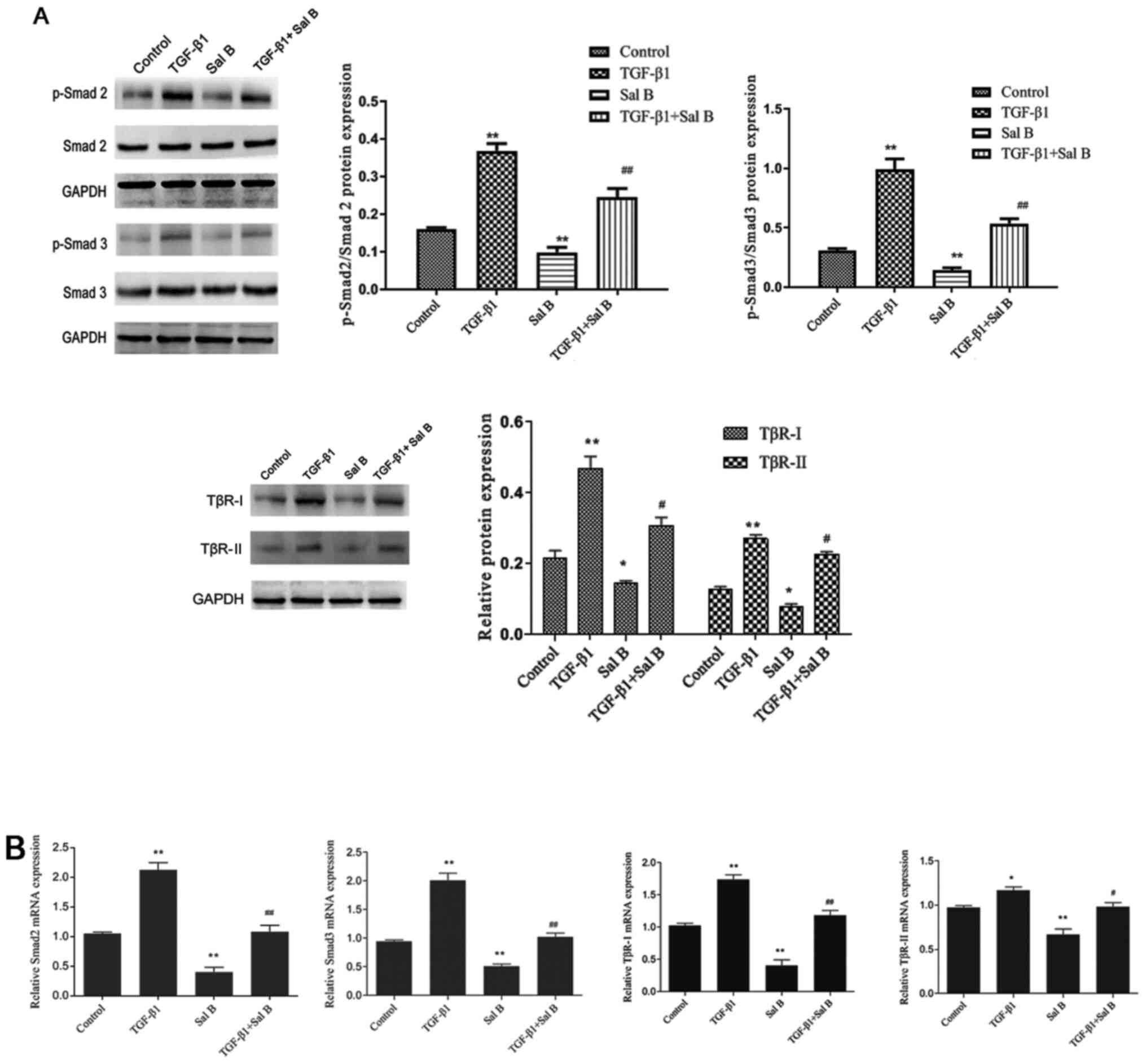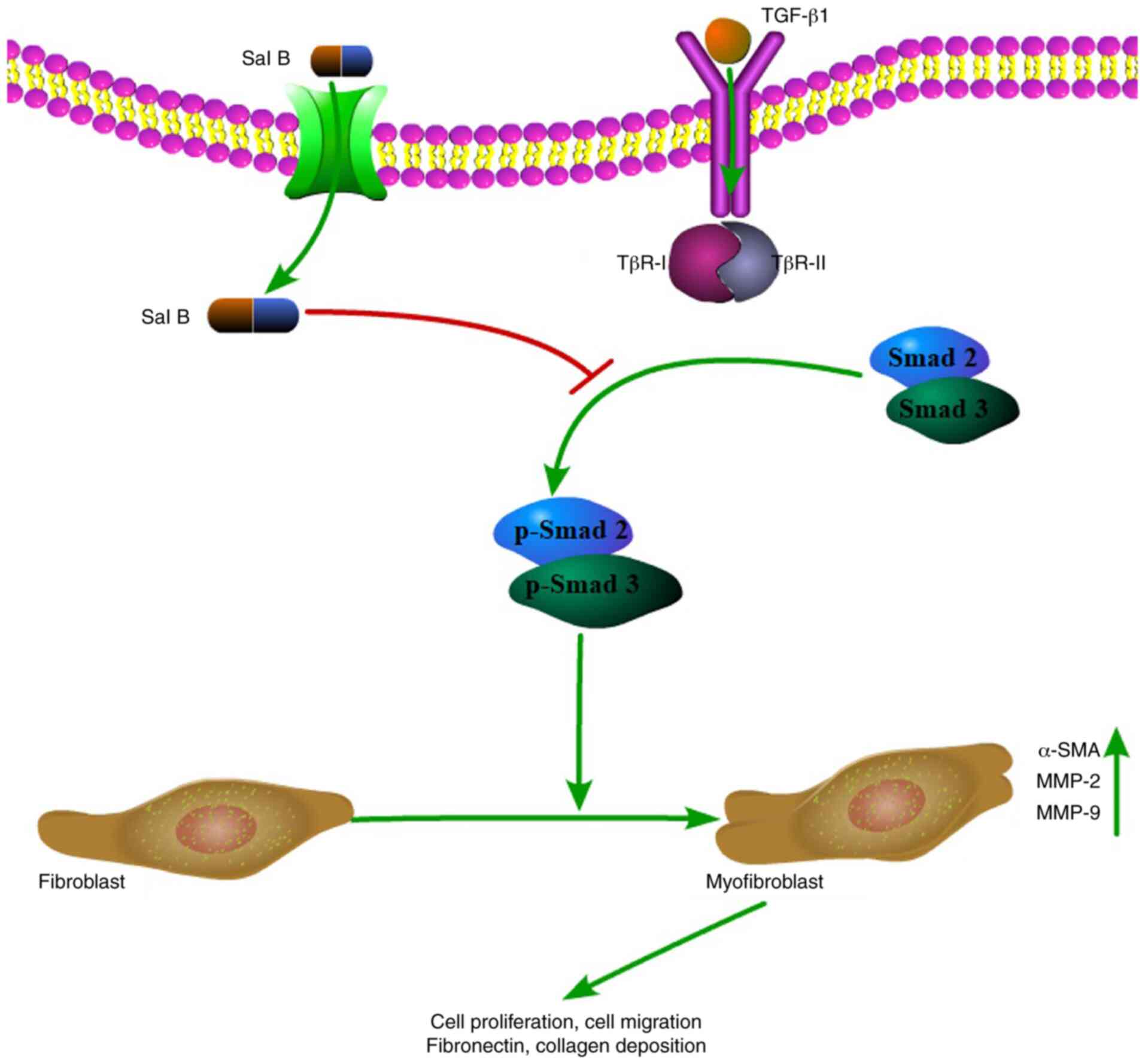|
1
|
Fokkens WJ, Lund VJ, Mullol J, Bachert C,
Alobid I, Baroody F, Cohen N, Cervin A, Douglas R, Gevaert P, et
al: European Position Paper on Rhinosinusitis and Nasal Polyps
2012. Rhinol Suppl. 23:3 p preceding table of contents, 1. –298.
2012.PubMed/NCBI
|
|
2
|
Van Crombruggen K, Van Bruaene N,
Holtappels G and Bachert C: Chronic sinusitis and rhinitis:
Clinical terminology ‘Chronic Rhinosinusitis’ further supported.
Rhinology. 48:54–58. 2010.PubMed/NCBI
|
|
3
|
Van Zele T, Holtappels G, Gevaert P and
Bachert C: Differences in initial immunoprofiles between recurrent
and nonrecurrent chronic rhinosinusitis with nasal polyps. Am J
Rhinol Allergy. 28:192–198. 2014. View Article : Google Scholar : PubMed/NCBI
|
|
4
|
Pawankar R: Nasal polyposis: an update:
editorial review. Curr Opin Allergy Clin Immunol. 3:1–6. 2003.
View Article : Google Scholar : PubMed/NCBI
|
|
5
|
Pezato R, Voegels RL, Pinto Bezerra TF,
Perez-Novo C, Stamm AC and Gregorio LC: Mechanical disfunction in
the mucosal oedema formation of patients with nasal polyps.
Rhinology. 52:162–166. 2014. View Article : Google Scholar : PubMed/NCBI
|
|
6
|
Shin JM, Park JH, Kang B, Lee SA, Park IH
and Lee HM: Effect of doxycycline on transforming growth
factor-beta-1-induced matrix metalloproteinase 2 expression,
migration, and collagen contraction in nasal polyp-derived
fibroblasts. Am J Rhinol Allergy. 30:385–390. 2016. View Article : Google Scholar : PubMed/NCBI
|
|
7
|
Wang QP, Escudier E, Roudot-Thoraval F,
Abd-Al Samad I, Peynegre R and Coste A: Myofibroblast accumulation
induced by transforming growth factor-beta is involved in the
pathogenesis of nasal polyps. Laryngoscope. 107:926–931. 1997.
View Article : Google Scholar : PubMed/NCBI
|
|
8
|
Shin SH, Ye MK, Lee DW and Che MH: Effect
of Acacia Honey on Transforming Growth Factor-Beta-1-Induced
Myofibroblast Differentiation and Matrix Metalloproteinase-9
Production in Nasal Polyp Fibroblasts. Am J Rhinol Allergy.
33:483–489. 2019. View Article : Google Scholar : PubMed/NCBI
|
|
9
|
Zhang L, Wu Z, Qin H, Chen W and Zhang G:
Changes of Transforming Growth Factor-β1 and Extracellular Matrix
in the Wound Healing Process of Rats Infected With Pseudomonas
aeruginosa. Wounds. 26:293–300. 2014.PubMed/NCBI
|
|
10
|
Wang LF, Chien CY, Chiang FY, Chai CY and
Tai CF: Corelationship between matrix metalloproteinase 2 and 9
expression and severity of chronic rhinosinusitis with nasal
polyposis. Am J Rhinol Allergy. 26:e1–e4. 2012. View Article : Google Scholar : PubMed/NCBI
|
|
11
|
Watelet JB, Bachert C, Claeys C and Van
Cauwenberge P: Matrix metalloproteinases MMP-7, MMP-9 and their
tissue inhibitor TIMP-1: Expression in chronic sinusitis vs nasal
polyposis. Allergy. 59:54–60. 2004. View Article : Google Scholar : PubMed/NCBI
|
|
12
|
Eyibilen A, Cayli S, Aladag I, Koç S,
Gurbuzler L and Atay GA: Distribution of matrix metalloproteinases
MMP-1, MMP-2, MMP-8 and tissue inhibitor of matrix
metalloproteinases-2 in nasal polyposis and chronic rhinosinusitis.
Histol Histopathol. 26:615–621. 2011.PubMed/NCBI
|
|
13
|
Can IH, Ceylan K, Caydere M, Samim EE,
Ustun H and Karasoy DS: The expression of MMP-2, MMP-7, MMP-9, and
TIMP-1 in chronic rhinosinusitis and nasal polyposis. Otolaryngol
Head Neck Surg. 139:211–215. 2008. View Article : Google Scholar : PubMed/NCBI
|
|
14
|
Li X, Meng J, Qiao X, Liu Y, Liu F, Zhang
N, Zhang J, Holtappels G, Luo B, Zhou P, et al: Expression of TGF,
matrix metalloproteinases, and tissue inhibitors in Chinese chronic
rhinosinusitis. J Allergy Clin Immunol. 125:1061–1068. 2010.
View Article : Google Scholar : PubMed/NCBI
|
|
15
|
Kastrup J, Jørgensen E, Rück A, Tägil K,
Glogar D, Ruzyllo W, Bøtker HE, Dudek D, Drvota V, Hesse B, et al
Euroinject One Group, : Direct intramyocardial plasmid vascular
endothelial growth factor-A165 gene therapy in patients with stable
severe angina pectoris A randomized double-blind placebo-controlled
study: The Euroinject One trial. J Am Coll Cardiol. 45:982–988.
2005. View Article : Google Scholar : PubMed/NCBI
|
|
16
|
Jiang XW, Zhang Y, Yang SK, Zhang H, Lu K
and Sun GL: Efficacy of salvianolic acid B combined with
triamcinolone acetonide in the treatment of oral submucous
fibrosis. Oral Surg Oral Med Oral Pathol Oral Radiol. 115:339–344.
2013. View Article : Google Scholar : PubMed/NCBI
|
|
17
|
Lin YL, Wu CH, Luo MH, Huang YJ, Wang CN,
Shiao MS and Huang YT: In vitro protective effects of salvianolic
acid B on primary hepatocytes and hepatic stellate cells. J
Ethnopharmacol. 105:215–222. 2006. View Article : Google Scholar : PubMed/NCBI
|
|
18
|
Lv Z and Xu L: Salvianolic Acid B Inhibits
ERK and p38 MAPK Signaling in TGF-β1-Stimulated Human Hepatic
Stellate Cell Line (LX-2) via Distinct Pathways. Evid Based
Complement Alternat Med. 2012:9601282012. View Article : Google Scholar : PubMed/NCBI
|
|
19
|
Lu HY, Zhou J, Lu M, Liu YM, Wang F, Lin M
and Zhang Y: Protection and mechanisms of salvianolic-acid B on
experimental renal interstitial fibrosis in rats. Zhong Yao Cai.
33:1755–1759. 2010.(In Chinese). PubMed/NCBI
|
|
20
|
Liu Q, Chu H, Ma Y, Wu T, Qian F, Ren X,
Tu W, Zhou X, Jin L, Wu W, et al: Salvianolic Acid B Attenuates
Experimental Pulmonary Fibrosis through Inhibition of the TGF-β
Signaling Pathway. Sci Rep. 6:276102016. View Article : Google Scholar : PubMed/NCBI
|
|
21
|
Li Y, Wang L, Dong Z, Wang S, Qi L, Cho K,
Zhang Z, Li N, Hu Y and Jiang B: Cardioprotection of salvianolic
acid B and ginsenoside Rg1 combination on subacute myocardial
infarction and the underlying mechanism. Phytomedicine. 57:255–261.
2019. View Article : Google Scholar : PubMed/NCBI
|
|
22
|
Livak KJ and Schmittgen TD: Analysis of
relative gene expression data using real-time quantitative PCR and
the 2(−∆ ∆ C(T)) Method. Methods. 25:402–408. 2001. View Article : Google Scholar : PubMed/NCBI
|
|
23
|
Cervin A: The anti-inflammatory effect of
erythromycin and its derivatives, with special reference to nasal
polyposis and chronic sinusitis. Acta Otolaryngol. 121:83–92. 2001.
View Article : Google Scholar : PubMed/NCBI
|
|
24
|
Katainen E, Kostamo K, Virkkula P, Sorsa
T, Tervahartiala T, Haapaniemi A and Toskala E: Local and systemic
proteolytic responses in chronic rhinosinusitis with nasal
polyposis and asthma. Int Forum Allergy Rhinol. 5:294–302. 2015.
View Article : Google Scholar : PubMed/NCBI
|
|
25
|
Uluyol S, Arslan IB, Demir A, Mercan GC,
Dogan O and Çukurova İ: The role of the uncinate process in
sinusitis aetiology: Isolated agenesis versus maxillary sinus
hypoplasia. J Laryngol Otol. 129:458–461. 2015. View Article : Google Scholar : PubMed/NCBI
|
|
26
|
Wang LF, Tai CF, Chien CY, Chiang FY and
Chen JY: Vitamin D decreases the secretion of matrix
metalloproteinase-2 and matrix metalloproteinase-9 in fibroblasts
derived from Taiwanese patients with chronic rhinosinusitis with
nasal polyposis. Kaohsiung J Med Sci. 31:235–240. 2015. View Article : Google Scholar : PubMed/NCBI
|
|
27
|
Park HH, Park IH, Cho JS, Lee YM and Lee
HM: The effect of macrolides on myofibroblast differentiation and
collagen production in nasal polyp-derived fibroblasts. Am J Rhinol
Allergy. 24:348–353. 2010. View Article : Google Scholar : PubMed/NCBI
|
|
28
|
Mullol J, Roca-Ferrer J, Alobid I, Pujols
L, Valero A, Xaubet A, Bernal-Sprekelsen M and Picado C: Effect of
desloratadine on epithelial cell granulocyte-macrophage
colony-stimulating factor secretion and eosinophil survival. Clin
Exp Allergy. 36:52–58. 2006. View Article : Google Scholar : PubMed/NCBI
|
|
29
|
Cho JS, Moon YM, Park IH, Um JY, Moon JH,
Park SJ, Lee SH, Kang HJ and Lee HM: Epigenetic regulation of
myofibroblast differentiation and extracellular matrix production
in nasal polyp-derived fibroblasts. Clin Exp Allergy. 42:872–882.
2012. View Article : Google Scholar : PubMed/NCBI
|
|
30
|
Um JY, Lee SA, Park JH, Shin JM, Park IH
and Lee HM: Role of adenosine monophosphate-activated protein
kinase on cell migration, matrix contraction, and matrix
metalloproteinase-1 and matrix metalloproteinase-2 production in
nasal polyp-derived fibroblasts. Am J Rhinol Allergy. 31:357–363.
2017. View Article : Google Scholar : PubMed/NCBI
|
|
31
|
Muluk NB, Arikan OK, Atasoy P, Kiliç R and
Yalçinozan ET: The role of MMP-2, MMP-9, and TIMP-1 in the
pathogenesis of nasal polyps: Immunohistochemical assessment at
eight different levels in the epithelial, subepithelial, and deep
layers of the mucosa. Ear Nose Throat J. 94:E1–E13. 2015.PubMed/NCBI
|
|
32
|
Suzuki M, Ramezanpour M, Cooksley C, Li J,
Nakamaru Y, Homma A, Psaltis A, Wormald PJ and Vreugde S: Sirtuin-1
Controls Poly (I:C)-Dependent Matrix Metalloproteinase 9 Activation
in Primary Human Nasal Epithelial Cells. Am J Respir Cell Mol Biol.
59:500–510. 2018. View Article : Google Scholar : PubMed/NCBI
|
|
33
|
Li X, Tao Y and Li X: Expression of
MMP-9/TIMP-2 in nasal polyps and its functional implications. Int J
Clin Exp Pathol. 8:14556–14561. 2015.PubMed/NCBI
|















